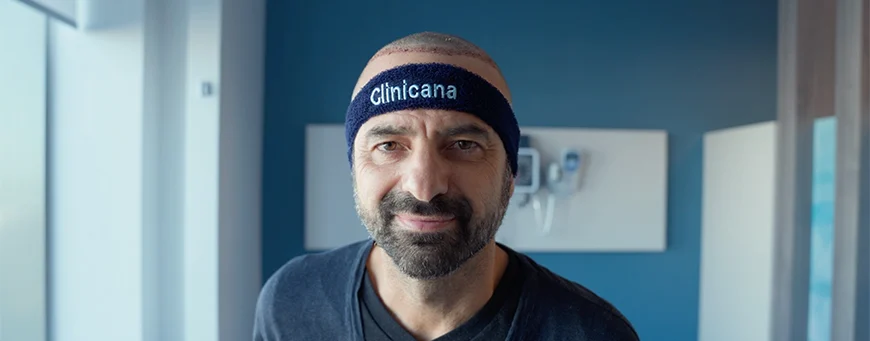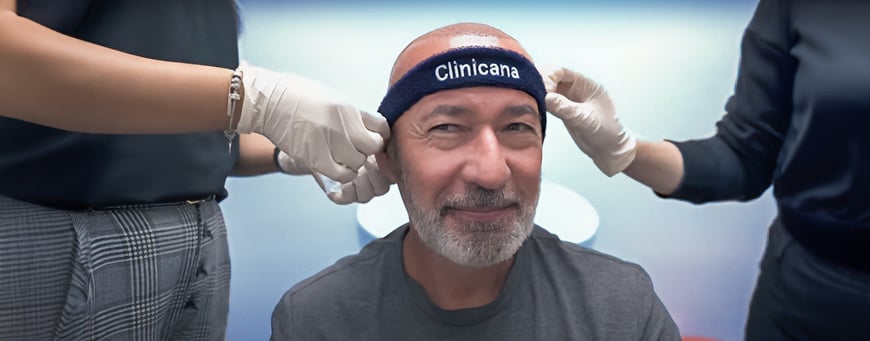Hair Miniaturization: signs, diagnosis, and treatment
Hair miniaturization is the technical term for hair thinning or balding. Miniaturised hair is a phenomenon by which our hair becomes thinner and smaller as it dies and regenerates again, making hair finally even disappear completely. In fact, miniaturization of the hair is one of the first signs that alert us that we may be suffering from some type of alopecia and that, therefore, we should go to a hair specialist as soon as possible.
Hair implants are normally the best solution for those who have lost their hair, and they are becoming more and more popular, since the cost of a hair transplant is nowadays affordable to almost everyone. However, before getting a hair transplant, there are other alternatives to reverse miniaturized hair. We can prevent or slow down its appearance by putting ourselves in the hands of an expert. So, let’s talk about why miniaturized hair appears, how can we detect it, and what is the best hair miniaturization treatment.
How long does hair miniaturization take?
We can say that there is a hair follicle miniaturization process when the size of hairs becomes progressively reduced, both in thickness and in length, making some areas appear with low hair density in contrast with others in which hair growth is normal. Normally, a rapid hair miniaturization is not something usual: on the contrary, hair miniaturises not in a matter of days, but of years.
Miniaturized hair is actually one of the first symptoms of many types of alopecia; it occurs because the anagen (growth) phase of hair gets shorter and shorter, which in turn causes miniaturized hair to fall out earlier than it should.
Therefore, if it is not treated in time, hair slows down its growth until it stops completely: that is, hair stops developing from follicles, which atrophy and finally die, giving way to baldness. Miniaturised hair is a typical symptom of pattern baldness (the most common type of alopecia), especially among men after they become 20 years old; however, female hair miniaturization is quite common, too.
How do I know if my hairs are miniaturising?
As we have just explained, knowing how to identify the appearance of miniaturized hair is key to detect the first symptoms of alopecia; if we can detect those symptoms in time, a hair health specialist will indicate us which is the best solution to stop the miniaturization process.
At first glance, it is possible to detect that our hair is undergoing a miniaturization process if we observe areas with less hair volume or hair density, when compared to others; also, if we compare a photograph from a few years ago with a current one, and we see that some areas of our head begin to show less hair density; or – for example – if we observe a recession of the frontal line.
However, we should go as soon as possible to a specialist so that, using a trichoscope, the expert can examine our hair and determine if it is really undergoing a miniaturization process. Once the diagnosis is made and our case has been evaluated, the hair specialist will recommend us which is the best treatment to slow the progression of alopecia, and prevent us from permanently losing our hair.
What causes the miniaturisation of hair?
There are many reasons that can cause the miniaturisation of hair follicles; but among all, we can highlight the following ones:
Insufficient blood flow:
Scalp is an area covered by a thick network of blood vessels that carry oxygen, trace elements and nutrients that follicles need to generate healthy and strong hair. If the blood flow is obstructed, and not enough blood arrives, then follicles lose their ability to produce new hair, which grows weak and underdeveloped.
Genetic inheritance:
The genes that we inherit from our family, are actually the most common cause of alopecia; and therefore, also of one of its first symptoms: hair miniaturization. If there is a history in our family of persons with hair loss problems, or whose hair has lost density and strength… then, there is a high probability that the same thing will happens to us.
The dihydrotestosterone (DHT) hormone:
Related to the previous factor, dihydrotestosterone (DHT) is a hormone that our body produces from testosterone, which is the male hormone (although it is also present in women). In those people who, by genetic inheritance, have a higher sensitivity to DHT, this hormone attacks follicles, weakening them and causing hair to miniaturize; in the end, follicles atrophy and die, no longer generating new hair. This is how male pattern baldness occurs.
A poor diet:
We are what we eat… and not just our body health depends on our diet, but also our hair health. A poorly balanced diet with too much fat, or with insufficient vitamins, minerals and other nutrients that our hair needs, will end up making it weak, and not growing as it should.
Age:
Although at a lesser extent, age also influences on the progressive reduction in the size and thickness of our hair. Especially after age 60, hair growth slows down and usually loses strength, with a progressive miniaturization appearing.
Can miniaturization of hair follicles be reversed?
Once the problem of miniaturization in our hair has been identified by an expert, it is time to make decisions to save our hair. The question is, can miniaturized hair grow back? In many cases, and if it is treated in time, hair miniaturization reversal is possible: a hair specialist can prescribe different medications to strengthen our hair and/or stimulate its growth.
Treatments such as PRP (Platelet Rich Plasma), almost painless and with no side effects, offer good results in cases of miniaturized hair or moderate loss of hair density. It is also possible to reverse follicular miniaturisation with minoxidil, a drug that stimulates hair growth and thickness in 2 out of 3 men; also in women, as several studies have shown.
The problem with all these treatments is that they can stimulate follicles, if they are going through a hair miniaturization process; but, they cannot make new hair to rise there where it has completely disappeared: in this case, the only viable and definitive solution is a hair transplant. Put your hair health in the best hands: Clinicana is the best hair transplant clinic. Request a free consultation, and ask us for a free, no obligation estimate for your treatment. You can get your hair back!

A hair transplant procedure can be a transformative experience. But to ensure your newly implanted follicles thrive, proper aftercare is very essential. This article equips you with key hair transplant recovery tips or post-operative instructions to minimize discomfort, optimize healing, and pave the way for a successful hair transplant journey for you. Hair transplant recovery […]

Dreaming of a full head of hair? Hair transplants are gaining traction, particularly in Turkey as clinics there are characterized by budget-friendly options and skilled surgeons. But, with so many clinics, the way of choosing the right one can be overwhelming. This article will help you find one of those top 10 hair transplant clinics […]

Finding the best hair transplant clinic in Istanbul is a crucial decision. In this article, we will look at some important factors to help you make an informed decision to ensure a successful surgery. How to choose the best hair transplant clinic in Istanbul? Istanbul has emerged as a sought – after destination for hair […]






